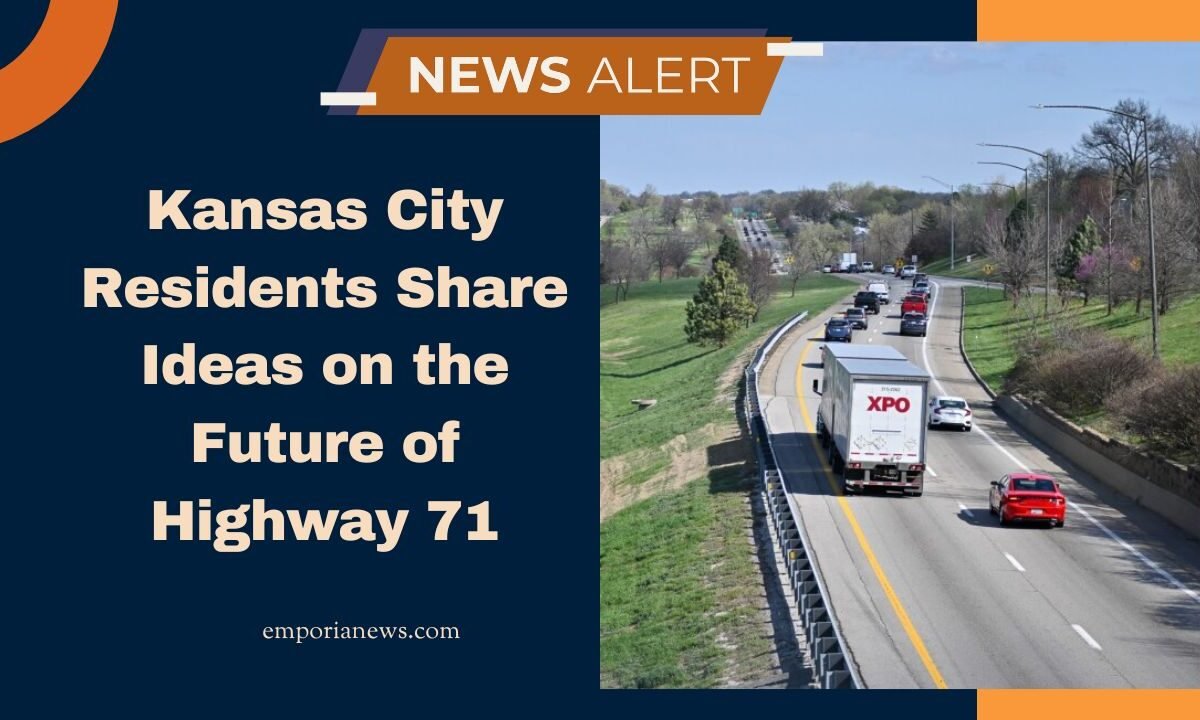The future of U.S.–71 Highway in Kansas City—also known as Bruce R. Watkins Drive—has sparked intense community discussion.
As part of the Reconnecting the East Side project, city officials and residents are exploring alternatives to redesign the highway, address its divisive legacy, and reshape how people move, live, and connect along the corridor. The project is working toward more equitable, safe, and community-centered options.
Background: Why the Change?
| Aspect | Detail |
|---|---|
| History of Impact | The highway’s construction displaced around 2,000 homes and impacted over 25,000 residents, largely from Black neighborhoods. |
| Study Area | From Martin Luther King, Jr. Boulevard (north) to East 85th Street (south); west boundary Paseo Boulevard, east boundary Swope Parkway. |
| Current Issues | High crash rates—crash rate on U.S. 71 is nearly double that of other Missouri expressways; difficulty for pedestrians and cyclists; disinvestment and visual decay; area lacks healthy food, job access, and amenities. |
| Project Partners & Funding | Kansas City, MoDOT, MARC. Phase 1 & Phase 2 funded by $5 million RAISE grant + $2.5 million from city and MoDOT. |
The Three “Initial Alternatives”
Residents were asked to weigh in on three conceptual directions. Each has different implications for design, traffic, safety, community, cost, and timeline.
| Alternative | Key Features / Changes Suggested |
|---|---|
| Freeway | Maintain a high-speed, limited-access highway; possibly reduce or consolidate crossings; focus on vehicular flow. Some residents concerned it’s more of the same and less accessible for people on foot. |
| Parkway / Boulevard | Reduce lanes (for example from three to two in each direction), add landscaping, wider sidewalks, slower speeds, beautification (medians, trees), design more like a neighborhood street vs. expressway. Named in feedback by residents such as Elena Hill and Barbara Nix. |
| Removal / Significant Removal | Remove portions of U.S. 71, re-connect neighborhoods formerly severed; possibly convert to local streets, green space; allow more cross-connectivity. A radical option with major trade-offs |
Community Feedback & Key Requests
- Beautification: More greenery, design, color in medians; maintain medians (remove dead trees/branches); beautify both sides of highway visible to incoming/outgoing traffic.
- Connectivity & Equity: Access to healthy foods, job training, more youth support and mentoring; improving pedestrian and cyclist safety; ensuring neighborhoods aren’t isolated.
- Safety: Crashes common especially rear-end collisions; dangerous pedestrian crossings; speeding issues. Desire for traffic calming, more crossings, possibly elevated or bridge crossings in place of traffic lights.
Project Phases & Timeline
- Phase 1 (Fall 2024 – Winter 2026): Planning & Environmental Linkages (PEL) Study including initial alternatives, community engagement.
- Phase 2 (Fall 2025 – Summer 2026): Addressing the 1985 Federal Consent Decree, which currently constrains major changes to U.S. 71 corridor
- Phase 3 (Summer 2026 – Fall 2028): National Environmental Policy Act (NEPA) review, preliminary design of chosen alternatives, impact studies.
Interim improvements are also being considered so that residents see changes before full construction. Next Community Summit planned for early 2026.
Pros & Cons of Each Option
| Option | Potential Benefits | Challenges / Trade-Offs |
|---|---|---|
| Freeway | Smooth traffic flow; preserves current vehicular throughput; lower cost vs full removal; faster travel times. | Less safe for pedestrians; continues separation of neighborhoods; visually and socially imposing; may not satisfy equity concerns. |
| Parkway / Boulevard | Enhanced urban fabric: greener, safer, more walkable; helps reconnect neighborhoods; supports local businesses; improved aesthetics. | Slower traffic, possibly increased congestion; higher cost for restructuring; longer implementation; complex design. |
| Removal / Significant Removal | Possibility of healing long-time divides; potential for reclaiming land for housing, parks, mixed-use; transformative change. | Very high cost; huge disruption during transition; strong legal/regulatory hurdles (consent decree, environmental reviews); possible resistance from drivers who rely on highway capacity. |
The Reconnecting the East Side initiative indicates that Kansas City is at a critical juncture for U.S. 71 Highway. The community is clear: more than traffic flow matters. Beautification, equity, safety, and reconnection are essential values.
Whether the future of 71 is a freeway, a parkway, or something more radical, the path forward will require balancing technical constraints, legal frameworks, and deeply felt community needs.
As the planning and design phases advance, the voices of residents will be central to ensuring the outcome does more than repair physical infrastructure—it reshapes civic life.



